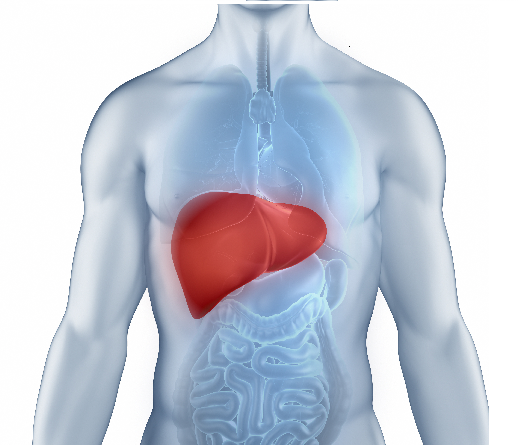Juvenile Idiopathic Arthritis
Juvenile Idiopathic Arthritis (JIA) is a type of arthritis, primarily found in children under the age of 16. This condition involves prolonged joint inflammation, leading to discomfort, pain, swelling, stiffness, and potential long-term joint damage.
JIA is not a single disease but a group of several arthritis subtypes, each with distinct symptoms and prognoses. The primary goal in managing JIA is to control symptoms, prevent joint damage, and maintain function.
What Causes Juvenile Idiopathic Arthritis (JIA)?
Juvenile Idiopathic Arthritis causes remain unclear, but it is identified as an autoimmune disorder. In autoimmune conditions, the body’s immune system mistakenly attacks its tissues, such as the joints. Genetic factors, environmental triggers, and abnormalities in the immune system are thought to contribute to the development of JIA.
What are the Risk Factors of Juvenile Idiopathic Arthritis (JIA)?
While the specific cause of JIA remains elusive, several risk factors have been identified:
- A family history of autoimmune diseases or arthritis increases the risk.
- Some types of JIA are more common in girls than boys.
- Certain infections may trigger an abnormal immune response, leading to JIA in genetically predisposed children.
What are the Signs of Juvenile Idiopathic Arthritis (JIA)?
Common Juvenile Idiopathic Arthritis symptoms can vary depending on the type and severity of the disease:
- Persistent joint pain
- Swelling and stiffness in the joints
- Limping or difficulty using a limb
- High fever and skin rash (in systemic JIA)
- Fatigue
- Eye inflammation
What are the Various Types of Juvenile Idiopathic Arthritis (JIA)?
There are several types of JIA arthritis, which are:
- Oligoarticular JIA: Affects four or fewer joints in the first six months. It’s the most common form and usually affects larger joints like the knees.
- Polyarticular JIA (RF positive and RF negative): Affects five or more joints in the first six months. It can impact large and small joints and may resemble adult rheumatoid arthritis.
- Systemic JIA: Affects the entire body, not just the joints. It can cause high fevers, rash, and inflammation of internal organs.
- Enthesitis-related JIA: Involves inflammation at entheses, where tendons or ligaments connect to the bone. It’s often associated with pain in the spine and hips.
- Psoriatic JIA: Involves arthritis, psoriasis (a skin condition), or a family history of psoriasis.
- Undifferentiated JIA: Arthritis that doesn’t fit into any of the other categories or fits into more than one category.
How is Juvenile Idiopathic Arthritis (JIA) Diagnosed?
Diagnosing Juvenile Idiopathic Arthritis (JIA) involves a comprehensive approach:
- Medical and Physical Examination: A detailed history and thorough physical exam by a paediatric rheumatologist.
- Blood Tests: These can include tests for antinuclear antibodies (ANA), rheumatoid factor (RF), erythrocyte sedimentation rate (ESR), and C-reactive protein (CRP) to detect inflammation and specific markers.
- Imaging Studies: X-rays, MRI, or ultrasound may be used to evaluate joint damage and inflammation.
- Exclusion of Other Conditions: Other potential causes of joint pain and swelling, such as infections or other autoimmune diseases, must be ruled out.
How to Manage/Prevent Juvenile Idiopathic Arthritis (JIA)?
Managing JIA arthritis aims to control symptoms, prevent damage to joints, and maintain a good quality of life. While there is no known way to avoid JIA, early diagnosis and treatment are crucial. Management strategies include:
- Consulting a Healthcare Provider: A doctor can recommend appropriate medications and treatments tailored to the child’s individual needs.
- Physical and Occupational Therapy: Helps maintain joint function and muscle strength. Therapists can also provide strategies for daily activities.
- Lifestyle Modifications: Regular, gentle exercise to improve joint flexibility and muscle strength, a healthy diet, and adequate sleep.
- Regular Monitoring: Continuous assessment by healthcare providers to adjust treatment plans as needed. Regular eye exams are crucial for those at risk of uveitis.
Juvenile Idiopathic Arthritis (JIA) is a challenging condition that affects many children. However, with early diagnosis and a comprehensive management approach, affected individuals can lead healthy and active lives. Understanding the causes, risk factors, symptoms, and available treatments is crucial for effective management.
Book an ANA/ANF test from Dr Lal PathLabs for improved health treatment outcomes and quality of life for children with JIA.
FAQs
1. What is the life expectancy of a child with juvenile arthritis?
Children with JIA arthritis typically have an average life expectancy, especially with early diagnosis and appropriate treatment. Effective management of the condition can help prevent severe complications and maintain a good quality of life.
2. What is the difference between JIA and rheumatoid arthritis?
Juvenile Idiopathic Arthritis(JIA) affects children under 16, while rheumatoid arthritis (RA) primarily affects adults. JIA has several subtypes, distinct from adult RA, and the prognosis and treatment approaches differ between the two conditions.
3. What are the signs and symptoms of juvenile idiopathic arthritis?
Symptoms include joint pain, swelling, stiffness (especially in the morning or after inactivity), limping, fever, rash, and eye inflammation (uveitis). Children may also experience fatigue and growth problems.














